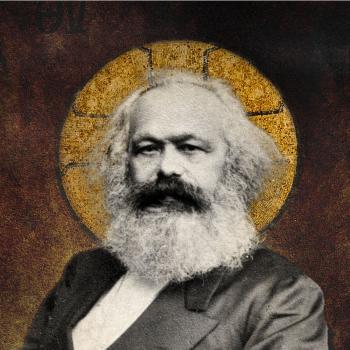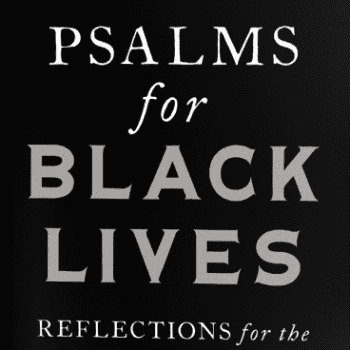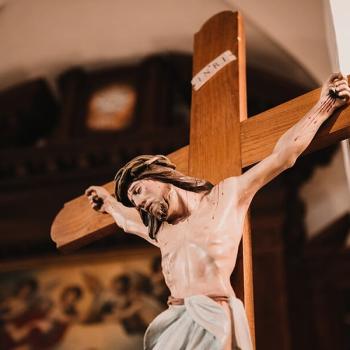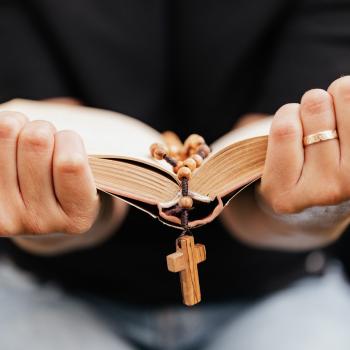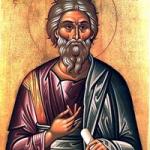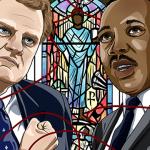More Musings from our Meandering Pilgrim, Rebecca Cole-Turner:
We went to bed in the wee hours after attending the Saturday Easter Vigil at the Cattedrale di Santa Maria del Fiore, so we made sure we set our alarm for Easter morning in order to get up in time to see what our landlord here in Florence promised would be a spettacolo, the Scoppio del Carro or the exploding Easter cart!

Ancient tradition places the origins of Scoppio del Carro in the First Crusade of 1099. Pazzino de Pazzi, a Florentine nobleman, is supposed to have been the first person to scale the walls of Jerusalem carrying the Florentine flag. For this he was rewarded with splinters made of stone from the Holy Sepulcher, which he then gave to the city when he returned home. These flint splinters, brought from the chiesa of Santi Apostoli across the Arno River where they have been kept since 1785, are used to light the Holy fire of Easter and the exploding cart every year.
After a quick cup of coffee, we walked to the Piazza della Repubblica three blocks away and climbed up on one of the monuments so we could see what was coming through the huge arch. Hearing the crisp cadence of drums, we saw men and boys, some in red and white, others in blue and white, looking like they had just arrived from a medieval faire, in leggings and with plumes on their hats. Then we saw a group behind them carrying flags with the symbol of Florence on them: the red Florentine lily on a field of white.

The marching men came to an abrupt halt, and then the flagbearers stepped out to form a circle and began spinning their large flags, tossing them high in the air to each other and catching them, so that the piazza was filled with swirling, soaring, twirling colors and patterns. After they completed their flag dance, the younger boys stepped up and performed an equally impressive demonstration.
Then through the tall arch that borders the piazza, the all-white oxen came pulling the 30-foot high, 500-year old exploding cart, led by men dressed as soldiers and then the dignitaries of the city, including the young mayor and a group of Florentine women dressed in beautiful Renaissance dresses of velvets and silks complete with jewelry. We even saw a man who looked like he was dressed as a Dominican friar, and I thought he looked like the late-fifteenth century Catholic reformer Savonarola.
This assemblage of several hundred moved slowly to the Piazza di San Giovanni, where the cart came to a halt between the medieval baptistery and the great doors of the cathedral. We were able to get to this square by taking a back way and ended up on steps that allowed us to see the cart and the archbishop and his entourage when they came out of the battistero to bless the cart. We were eagerly anticipating the moment at 11 am when the bells of the Campanile started to peal. Right on time, the mechanical white dove or colombina (think Holy Spirit), released by the archbishop, slid along the descending wire from the altar of the cathedral to the cart or brindellone (which means tall, wobbly cart), setting off the huge fireworks display. Legend has it that only if the fireworks explode will there be a good harvest and prosperity in the coming year for the people of Florence.
I won’t keep you in suspense: the dove flew straight and true on its wire and it seems that the Florentines will have a good harvest this year. Judging from the number of tourists in the streets, that “harvest” has already begun. As the loud firecrackers began to pop, the St. Catherine wheels twirled and sprayed showers of sparks high into the piazza, filling the air with white, red, and purple smoke.

I couldn’t help but wonder if the dove had exploded or if it was saved. When the smoke cleared, I saw that the white “dove” was still there, its beak next to the detonator. Despite my misgivings about a rather militaristic display set off by this mechanical representative of the Holy Spirit, I wanted the dove to survive.
The whole morning seemed both preposterous and strange and compelling at the same time. What does this have to do with Easter or the resurrection? What could it possibly mean to generation after generation to the good people of Florence? At that moment, I saw the elderly Italian man in front of me, who had shared my stone perch for the last two hours, take out his handkerchief and wipe his eyes. I realized that he was weeping but I sensed that he was weeping for joy, from a sense of gratitude that once again, God was blessing the newly planted crops, the surrounding vineyards, these people, and their beloved city.







